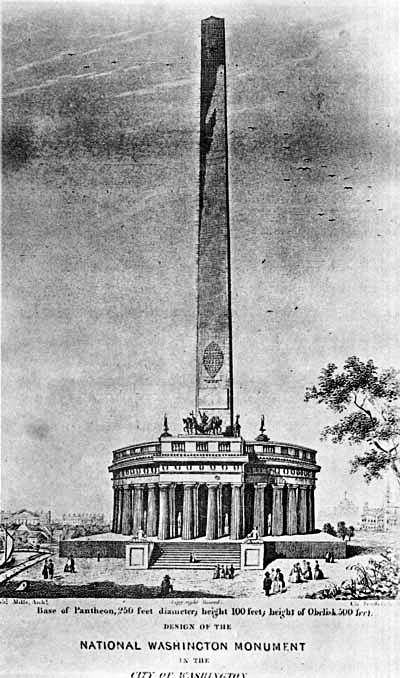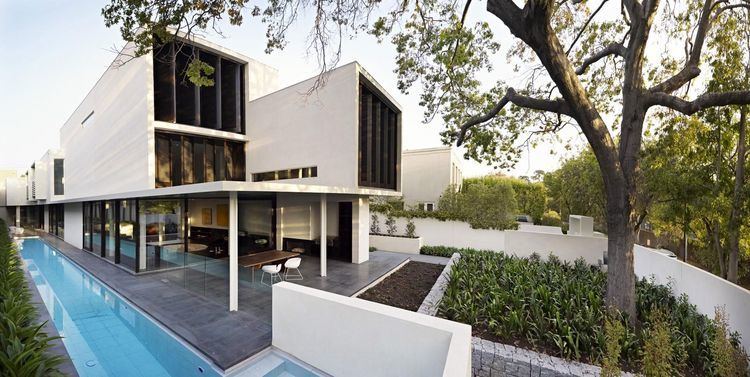Nationality American Name Robert Mills Spouse(s) Eliza Barnwell Smith | Religion Presbyterian Occupation Architect, Engineer | |
 | ||
Died March 3, 1855(1855-03-03) (aged 73)Washington D.C. Parent(s) William Mills & Ann Taylor | ||
Robert mills
Robert Mills (August 12, 1781 – March 3, 1855), known for designing the Washington Monument, is sometimes called the first native born American to be professionally trained as an architect, though Charles Bulfinch perhaps has a clearer claim to this honor. Mills studied in Charleston, South Carolina, as a student of Irish architect James Hoban—who later designed the White House, which became the official home of US presidents. Both Hoban and Mills were Freemasons.
Contents

Robert mills architect ross st toorak
Life

Born in Charleston, South Carolina, Mills moved to Philadelphia in 1802 where he became an associate and student of Benjamin Henry Latrobe. At the age of 19, Mills, a graduate of College of Charleston, left Charleston for Washington, DC, to work with his friend and mentor James Hoban on the construction of the White House. During this time, Robert met Thomas Jefferson, who became the first full term resident of the new Presidential home. Some Philadelphia buildings that Mills designed are Washington Hall, Samson Street Baptist Church, and the Octagon Church for the First Unitarian Church of Philadelphia. He also designed the Upper Ferry Bridge covering. Mills designed the First Presbyterian Church in Augusta, Georgia in 1807, which was built between 1809 and 1812. In 1808 Mills created blueprints for a prison used mostly for reform. In 1811 the prison was constructed in Mt. Holly, New Jersey. "With the possible exception of [their] neighbor, Eastern States Penitentiary, it is the most significant prison building in the United States" says the Historic Burlington County Prison Museum Association. In 1812, Mills designed the Monumental Church in Richmond, Virginia which was built to commemorate the death of 72 people in the Richmond Theatre.

Moving to Baltimore, Mills designed St. John's Episcopal Church, the Maryland House of Industry, the First Baptist Church of Baltimore (at South Sharp and West Lombard Streets) in 1817 and a Greek Revival mansion at the northeast corner of West Franklin and Cathedral Streets (across from the Old Baltimore Cathedral/Basiilica of the Assumption of Mary) occupied later from 1857 to 1892 by the Maryland Club, a dining and leisure society of Southern-leaning gentlemen. He is noted for designing the nation's first Washington Monument, with four surrounding park squares named Washington Place along the north-south axis of North Charles Street and Mount Vernon Place along East and West Monument Streets in the newly developed Mount Vernon-Belvedere neighborhood from "Howard's Woods", the country estate and mansion "Belvedere" north of old Baltimore Town of Col.John Eager Howard (1752-1827), Revolutionary War commander of the famed "Maryland Line" regiment of the Continental Army. Baltimore's signature landmark began construction in 1815 and was completed in 1829.
In 1820, Robert Mills was appointed as acting commissioner of the Board of Public Works in South Carolina. In 1823, he was the superintendent of public buildings. In the next few years, he designed numerous buildings in South Carolina including court houses, the campus of the University of South Carolina, jails, and the Fireproof Building in Charleston. In 1825, he authored an Atlas of the State of South Carolina. One year later, he published Statistics of South Carolina. He reputedly designed the Old Horry County Courthouse, Union County Jail, and Wilson House listed on the National Register of Historic Places.
In 1836 Robert Mills won the competition for the design of the Washington Monument on the future Mall of the National Capital, Washington D.C., which is his best known work. Construction began in 1848, but was interrupted in 1854. Construction of the monument resumed in 1879 and was dedicated in 1885, thirty years after the architect's death.
He also designed the Department of Treasury building, east of the Executive Mansion (White House) and several other federal buildings in Washington, D. C. including the U.S. Patent Office Building, patterned after the Parthenon (now renovated into two adjoining museums of the Smithsonian Institution, the Smithsonian American Art Museum and the National Portrait Gallery) and the old General Post Office.
In South Carolina, Mills designed county courthouses in at least 18 counties, some of the public buildings in Columbia, and a few private homes. He also designed portions of the Landsford Canal, Chester County, on the Catawba River in South Carolina.
Robert Mills was an early advocate of fireproof construction. A fire in Kingstree, South Carolina Building which had been designed by Mills, but the county records on the first floor were protected due to his fireproofing measures. A fire also destroyed much of the Lancaster County, South Carolina Courthouse in August 2008.
Mills died in Washington, D.C. in 1855 and was buried at the Congressional Cemetery there in the District of Columbia. Robert Mills was inducted into the South Carolina Business Hall of Fame in 2007.
Context
The broadest context for Mills' architecture was neoclassical architecture. This was the dominant style of building that was winning architectural design competitions and major projects of the time, both in Europe and in America. Under the umbrella of neoclassicism, his designs were partly Palladian, Georgian and often Greek Revival.
Apart from stylistic movements in architecture going on in the world, Robert Mills was involved in the more local context of building in the Mid-Atlantic States. There, and especially in Washington D.C., were many figures contributing architecture of high quality. To build as Mills did on what is now the National Mall, he had to contend with the planning strictures of Pierre Charles L'Enfant, as well as Andrew and Joseph Ellicott. Being an architect of the now Baltimore-Washington Metropolitan Area he was also undoubtedly influenced by Thomas Jefferson and Jeffersonian architecture. Mills, with Jefferson and others, was able to create a distinctive federal style of architecture.
